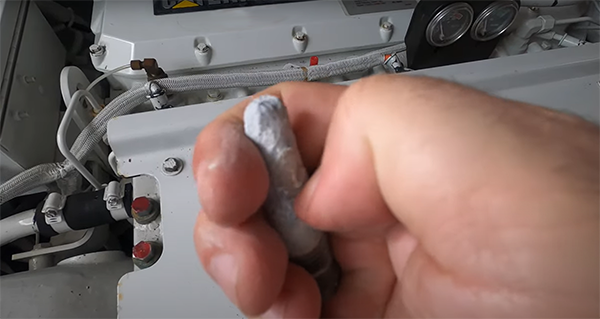Zincs, also known as sacrificial anodes, are an essential component of a boat’s engine and underwater gear. They are made from a metal alloy that is more electrically active than the other metals in the engine and create a circuit with the other metallic parts of the boat. This circuit helps to prevent galvanic corrosion, which can cause significant damage to the engine and other underwater metal components.
Zincs are designed to corrode over time, sacrificing themselves to protect the other metals from corrosion. Therefore, it is important to regularly check and replace the zincs to ensure that they continue to provide adequate protection.
The frequency at which zincs need to be replaced depends on several factors, such as the type of water in which the boat is operated (saltwater is more corrosive than freshwater), the size of the boat, and the amount of time the boat spends in the water. As a general rule of thumb, it is recommended to check the zincs every six months and replace them when they have corroded by about 50%.

It is also important to note that zincs should be replaced immediately if they are found to be severely corroded or missing altogether. Failing to replace zincs in a timely manner can result in significant corrosion damage to the boat’s engine and other underwater components, which can be costly to repair. Additionally, as pencil-type zincs corrode, they can separate from the brass retaining nut and be drawn into and clog the small tubes in heat exchangers.
When checking zincs, be sure to scrape them to ensure that they are not just a thin shell. Sometimes pencil-type zincs will corrode from the inside out, it will look fine on the surface, but the interior is hollow. A good tip is to compare the weights of a new zinc, and your existing zinc to be sure that they are in good condition. Unless it’s in perfect condition, replace it while you have it out! Replacement pencil zincs are generally under $10 each. Why take the chance?

There is some debate on whether to use Teflon Tape or pipe joint compound (Plumbers sealant) on the threads of zincs. In general, Teflon tape, when properly installed, is fine. The threads will cut through the tape as it is tightened and should provide a solid contact between the zinc and the component it’s protecting. Using a meter to check resistance is an excellent way to confirm this. The issue with Teflon Tape is that it can prevent good conductivity if too much is applied. Also, if not correctly installed, bits of the tape can shear off and make their way into engine components.
Generally, we always use pipe joint compound. It is easier to apply, provides a good seal, and has none of the potential drawbacks of Teflon Tape. An even betters solution it to use a product like Kopr-Shield or Kopr-Kote, which is a conductive paste thread sealer. While a bit pricy, a small container will last a lifetime for most boat owners.
When you change your engine zincs use a Sharpie and write the date on the end to remind you when you last changed it.
Be sure you check your boat owner’s manual or online resources to find all of the zinc locations. We suggest making a list of locations, sizes, and replacement dates and posting it in your boat somewhere to remind you. As a general rule, engine blocks, heat exchangers (water, air, oil, and transmission), and some pumps will all have one or more zincs.
Don’t forget about your generator, its engine and heat exchanger will probably have a zinc. Also, many other systems that are in contact with raw water will have zincs, such as Seakeepers, Hydraulic Pumps, Water Makers, and the like.

